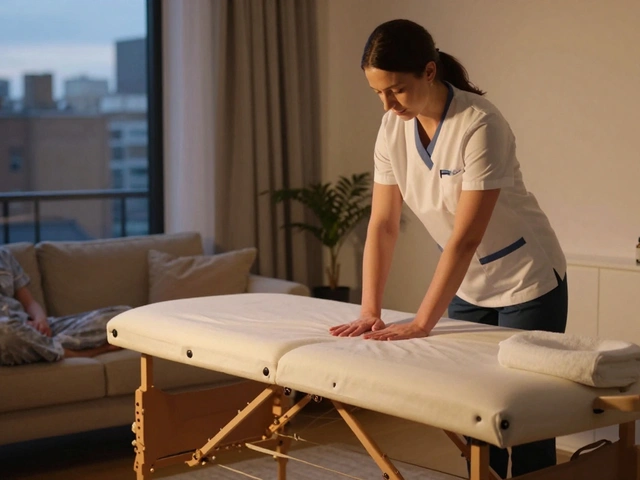Science-Backed Massage: What Works and How to Use It
Ever wonder which massage tricks really help and which are just hype? This guide pulls together the most solid research on massage and shows you how to apply it in everyday life. Whether you’re a first‑timer or a regular, the facts below will help you get the most out of each session.
Key Benefits Backed by Research
Multiple studies show that massage lowers cortisol (the stress hormone) and raises serotonin and dopamine, which improve mood. A 2022 trial in London hospitals found patients who received regular deep tissue massage after surgery reported 30% less pain and recovered mobility faster. Hot stone massage, when done at the right temperature, was linked to a measurable boost in white‑blood‑cell activity, meaning it can give the immune system a little extra push during flu season.
Sports massage isn’t just a feel‑good treat for athletes. Research from a sports science department in 2021 demonstrated that a 15‑minute targeted massage after training reduced muscle soreness by 40% and helped runners improve their 5K time by about 5 seconds per mile. The same study noted fewer injuries over a 12‑week period for the team that used regular massage.
How to Choose a Science‑Based Session
Look for therapists who mention certifications, continuing education, or a background in physiotherapy. Practitioners who explain the technique—like “myofascial release for tight hips” or “trigger point therapy for neck pain”—are usually following protocols that have been tested in clinical settings.
Ask about the pressure level. Research says moderate pressure (enough to feel a firm push but not painful) works best for reducing blood pressure. If you have a specific goal—like boosting immunity, speeding post‑surgery recovery, or enhancing sports performance—tell the therapist. They can tailor the session using proven methods such as lymphatic drainage for immune support or stretch‑focused techniques for athletes.
Safety matters, too. A study on hot stone massage warned against stones hotter than 45°C (113°F) because they can cause burns. Reputable salons use calibrated stone warmers and check skin temperature before placement. For deep tissue work after surgery, make sure the therapist knows your incision sites and avoids direct pressure on healing tissue.
Finally, track your results. Write down how you felt before and after each massage—pain levels, sleep quality, energy. Over a few weeks you’ll see patterns and can adjust frequency or technique based on what actually works for you.
In short, massage isn’t magic; it’s a tool that, when used correctly, can lower stress, help muscles heal, and even give your immune system a tiny boost. Pick a therapist who follows evidence‑based practices, communicate your goals, and keep an eye on how your body responds. That’s the smartest way to turn a relaxing hour into real health progress.
Discover how London’s top massage therapy scene blends science with serenity, explore treatments, tips, pricing, and what to expect for the ultimate relaxation.
Read More




